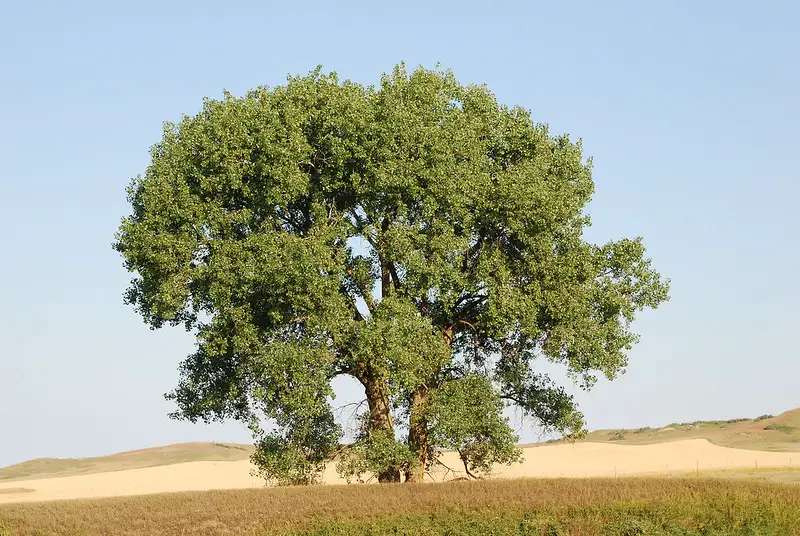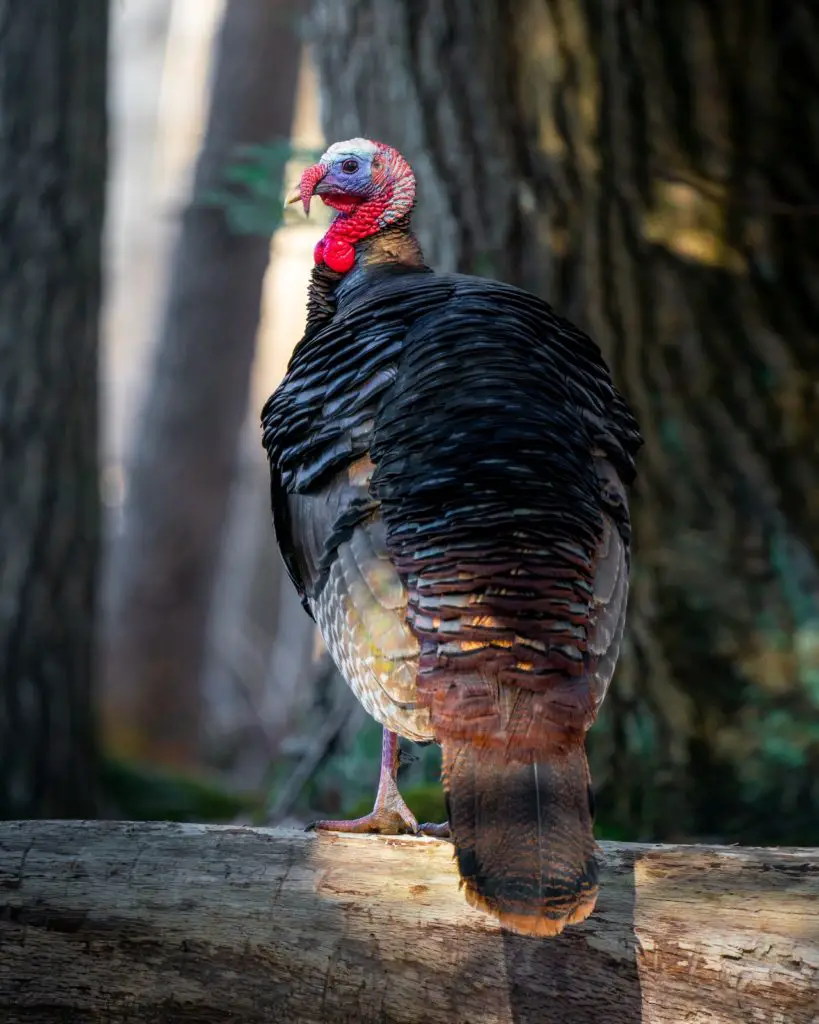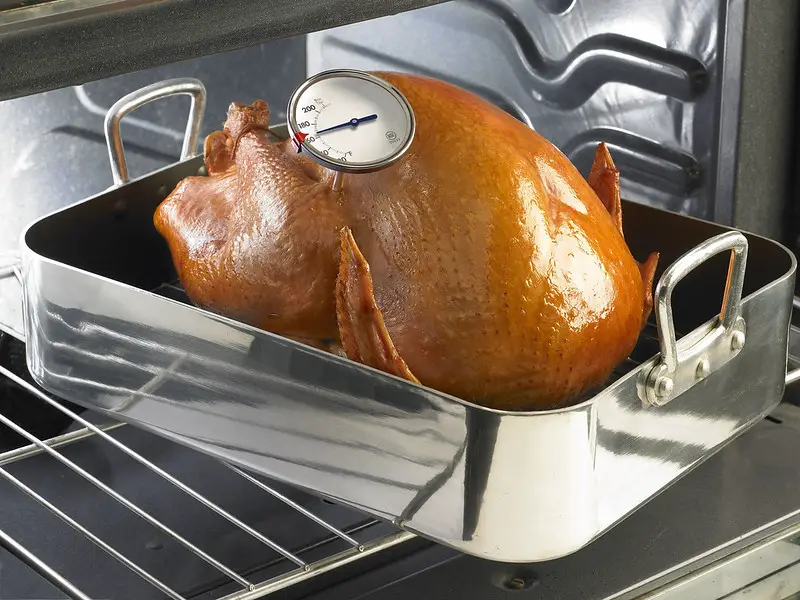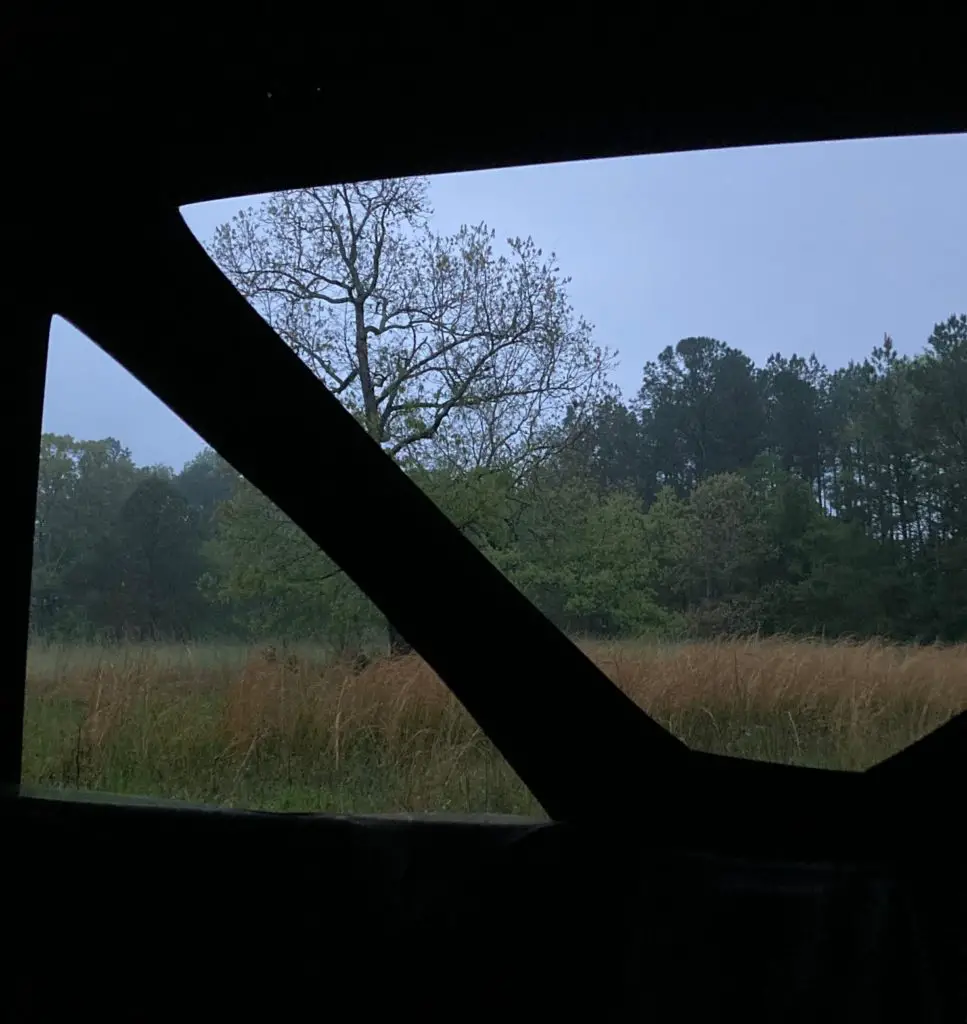
A roosted turkey is a roasted turkey. Right?
I’ve heard old-timers use this expression to refer to the success rate when hunting a turkey that you have “roosted” either the night before the hunt or the morning of the hunt.
But is it really true? Is a gobbling tom in a tree really as good as dead?
Read on to learn how to roost a turkey and to find out if this is your best strategy for bagging a gobbler this spring.
What is a Turkey Roost?
A turkey roost is the place a turkey goes to sleep. Turkeys will usually fly up into a tree around sunset. In the morning, they will fly down from their roost around first light or even a few hours later depending on the weather.
Turkeys sleep in trees for natural protection from predators. Because turkeys rarely move at night, sleeping in trees keeps them off the ground and surprisingly well hidden from those below them. They may use the same roosting site over and over, or they may roost in a different spot every night.
Roost a Turkey Without Leaving the House
The next time you’re scrolling aimlessly for the end of the internet, pull up your favorite satellite imagery site. I use Google Earth and onX Hunt.
Look at the areas that you have access to hunt. Try to find mature stands near the edges of fields and near creek bottoms or swamps. These are favored roosting grounds for turkeys.
Turkeys will roost over water for added protection as well as the convenience of getting essential hydration. Obviously, being near a food source is essential for the health of the bird. Finally, locating near a strutting zone (open area) will help them find other birds for reproduction.
The types of trees that turkeys sleep in varies widely depending on the area you are hunting. Oaks, loblolly pines, cypresses, cottonwoods, and sycamores are popular roosting trees.
Some believe that turkeys will choose trees based on the weather. Different trees provide different aspects such as resilience in weather, cover, and ease with which a bird can fly in and out. The most important thing is that a tree has a strong, sturdy horizontal branch capable of supporting the weight of one or more turkeys.

In areas where there are few trees, turkeys will roost on utility poles.
Carefully study your maps to find areas that have the turkey essentials. Next, we will hit the woods to locate these sites.
Locating Roost Sites in the Preseason
Now that you’ve identified some areas where you think a turkey might be roosting, it’s time to test your theory. I recommend going out in the late afternoon or early mornings a week or two before the season.
Take your optics and wear your camouflage. Leave the gun at home for legal reasons and the calls at home so you are not tempted to call. Calling birds before the season will only “educate” them that hunters also make breeding sounds. You don’t want to make these birds any more wary than they already are.
Setup in the areas you found on the maps and listen for turkeys. Do you hear them scratching for food? Do you hear hens yelping or toms gobbling? If you can find a vantage point that allows you to see a long way, watch for turkeys with your binoculars or spotting scopes. You want to identify where they are just before fly up, or just after fly down.
Walk around and look for droppings and feathers under trees. This is a definite indicator that turkeys are roosting in that area.
During this phase, the most important thing is to learn where the birds are in the early and late hours of the day. Remember that their patterns can shift between now and the start of season, but you will at least have a good idea of where to start out.
Roost a Turkey the Night Before the Hunt
The process for roosting a turkey the night before your hunt is similar to finding them in the preseason.
Use optics to look for birds going to roost if you are in open country. Get up on ridges and other high vantage points to listen for birds flying up to the roost. Turkeys are very loud when they fly and you can hear them flying if you are close enough. Some birds will also be vocal during and after fly up.
You can use crow, goose, owl, woodpecker, or even coyote calls to elicit shock gobbles from a wound-up turkey. A turkey shock gobbles because he has so much pent-up energy and emotion this time of year that a loud sharp sound causes him to gobble. When you hear a shock gobble, you will have an idea of where the turkey is located.
In some cases, a turkey will answer back to car doors slamming or horns honking. Conventional wisdom suggests using a natural sound to get the shock gobble. Some people believe that a coyote call will cause a turkey to go silent, while others swear by the coyote call.
This technique will be more or less successful depending on the subspecies you are hunting, the area you are hunting, and the individual birds themselves. While Merriam’s turkeys will gobble on the roost in the evenings all the time, Easterns rarely seem to gobble from the roost after fly up.
Once you have located a tom in a tree, mark the spot with your GPS. In the morning, you will want to try to get within 100 to 150 yards of this tree.
Roost a Turkey the Morning of Your Hunt
If you haven’t had a chance to go out the night before to roost one, don’t despair. You can still roost a turkey the morning of. In fact, I have had more luck roosting birds in the morning than in the evening in the places I hunt most often.
Because it will still be dark, you won’t be able to roost turkey in the morning by sight. Go to the area you think a turkey may be roosted or get up high where you can hear further.
I like to listen for a tom gobbling naturally before I try to get a shock gobble. If I don’t hear any hammering away, then I will pull out a crow call or an owl call to try to get one to sound off. If I’m still not hearing anything, I will take out a box call and let out some hen yelps.
After I hear a gobble, I try to distinguish exactly where he is. Hopefully, it is still dark enough that I know he is still in the tree. It helps if he continues gobbling as I plan my approach. Once again, I’m trying to get within 100 to 150 yards or as close as the situation dictates.
Hunting a Roosted Turkey
Alright, now you’ve got a rowdy tom located in a tree and it’s legal hunting time. How do we get that bird from the tree to the pot?
Use the predawn darkness to approach the roosted tom. The last thing you want to do is bust the turkey out of the tree before shooting light. If you hunt a thickly vegetated area, you may be able to get closer than 100 yards. If you hunt a wide-open area, you may need to be further than 150 yards.

Photo by Skyler Ewing from Pexels
When setting up to call to a roosted turkey, you don’t want the turkey to be able to see the exact place you are calling from. Otherwise, he may sit in the tree all morning gobbling to your every call but carefully looking for that eager hen that is singing so sweetly to him.
Try to set up uphill from the tom. It is much tougher to call a bird downhill. You also want to put as few obstacles between you and the gobbler as possible. Be on the same side of any creeks, fences, or other obstacles if at all possible.
If you are using decoys, stay between your decoys and the roosted tom. You don’t want him to hang up just out of range of your shotgun (or bow). Make him go past you to get to them.
Once you are set up, start him off with some soft calling. I will usually just cluck a couple of times. If he answers, I shut up. Remember, you want him to come to you. If he doesn’t answer, wait a few minutes and then ramp your calling up a bit.
If all goes according to plan, the tom will fly down and head straight towards the barrel of your shotgun. You may even beat the crowd to the Waffle House.
Hunting a Turkey Going to the Roost
If it’s legal to hunt turkeys in the evening where you hunt, you can hunt turkeys as they go up to the roost.
Let’s say you weren’t able to bag the gobbler you had roosted that morning, but you also didn’t spook him the process of hunting him. We know that turkeys will sometimes return to the same roost the next night.
Try to identify a field or food source where the turkey is likely to visit just before he flys up to roost. Get between this place and the roost you previously identified. Pop Mr. Tom right as he gets ready to go to his bedroom.
This technique is more effective in open areas where there are fewer suitable roost sites.

So is Roosted Really Roasted?
In my experience, a roosted bird is definitely not a sure thing. Turkeys will do turkey things and fly down in an unexpected direction. A lot of times, they will head off with a real hen before you get a chance. If this happens, don’t despair.
I have killed most of my gobblers mid-morning. The tom I had heard in the roost left me behind with a real hen. After he bred the hen or she played hard to get until he lost interest, that tom seemed to remember “the other hen” he heard from his roost.
The tom came back to that area and started gobbling looking for his next honey bunny. That’s when I have found the toms most willing to play the game and come into calling. That’s when I have killed the most birds.
It never hurts to roost a turkey, but don’t get frustrated if you don’t see immediate results from your hard work. If you are patient, you may still be able to get that turkey later in the morning or even in the evening when he comes back to the same roost.
For me, just hearing that bird on the limb gets me fired up. Even if I don’t kill him, I consider it a successful hunt getting to watch the woods wake up while listening to the majestic thunder of a tom turkey.



